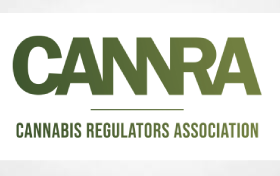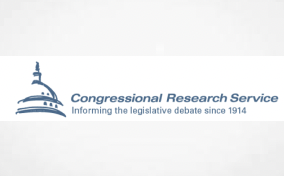Oregon House Bill 3000 (HB 3000) passed in 2021 with bipartisan and industry support. The legislation passed with two clear directives in mind: (1) regulating artificially derived cannabinoids like delta-8 THC, and (2) creating an enforcement system to ensure hemp licensees are not illegally growing marijuana. While the reforms seemed straightforward, the Oregon Liquor and Cannabis Commission (OLCC) and state law enforcement leveraged the legislation to essentially ban all artificially derived cannabinoids and drag compliant hemp licensees into southern Oregon’s revitalized war on cannabis. This blog post explains how these legislations developed, and ultimately led to Oregon’s hemp moratorium.
OLCC’s Near Ban on Artificially-Derived Cannabinoids
Section 2. (2) The duties, functions, and powers of the commission specified in ORS 475B.010 to 475B.545 include the following: (h) To regulate the processing, transportation, delivery, sale and purchase of artificially derived cannabinoids in accordance with the provisions of ORS 475B.010 to 475B.545.
This provision of HB 3000 kicked off a rule advisory committee (RAC) to regulate “artificially derived cannabinoids.” Artificially derived cannabinoids are usually created by processing hemp derived CBD into novel cannabinoid products. Some of these products, most notoriously delta-8 THC, possess intoxicating affects similar to delta-9 THC found in marijuana. However, because the 2018 Farm Bill legalized hemp products containing less than 0.3% delta-9 THC, artificially derived cannabinoid products like delta-8 are legal and existed outside OLCC regulatory authority. This also meant the products were readily available for sale online and to minors.
The first proposed regulations issued by the OLCC were essentially a blanket ban on all artificially derived cannabinoids. Industry push back was substantial, as they believed the intention of the RAC and HB 3000 was not to create an across-the-board ban on all products, but to focus on regulating intoxicating products like delta-8 THC that possess unknown health consequences and were getting into the hands of children.
OLCC in response promulgated OAR 845-025-1310 to create an approval process for artificially derived cannabinoids. The approval process is so onerous however that it makes little economic sense for producers to get their products approved. Even for more popular products like CBN, only the most well financed companies can afford to go through the process and obtain the requisite “Generally Regarded as Safe” (GRAS) determination from the FDA. Marijuana licensees in Oregon have until July 1, 2022, to sell off their inventory of artificially derived cannabinoid products that do not receive approval via OAR 845-025-1310 (a special deadline of July 1, 2023, applies to CBN).
Opponents of these regulations may challenge them in court. An interesting argument relates to the dormant commerce clause; a doctrine federal courts created that prohibits states from enforcing laws that excessively burden interstate commerce. A compliance bulletin issued by OLCC explicitly states the regulations do not impact the export of hemp products from Oregon, only import and sale within the state. By cutting off imports to the state while allowing export, and given the massive revenue from the sale of artificially derived cannabinoids, Oregon’s regulations may cause the type of impact on interstate that implicates the dormant commerce clause.
Law Enforcement Overreach and Targeting Legal Hemp Farmers
Section 43. (1)(a) Law enforcement officers may accompany the department [Oregon Department of Agriculture] to an industrial hemp operation for the purposes of providing protection for the department’s representatives.
Sections 40-45 of HB 3000 created a mechanism for the Oregon Department of Agriculture (ODA) to partner with OLCC to develop a methodology for inspecting hemp fields to determine whether registrants were compliant or illegally growing marijuana. From there the agencies launched “Operation Table Rock,” and law enforcement was quickly invited to tag along. At an OLCC Commission hearing in September of 2021, OLCC Senior Director of License and Compliance Rich Evans (who previously spent decades in law enforcement) stated, “[W]e had to set up interagency agreement with the Jackson and Josephine County Sheriff’s Office, the Oregon State Police, the Medford Police Department, and the Oregon Department of Agriculture… we treated this just like a normal law enforcement operation in that we did threat assessments for every location that we went to.”
The main byproduct of Operation Table Rock is an often-cited statistic that 58% of tested cites failed the “presumptive testing” system created by ODA and OLCC. Our previous posts on Operation Table Rock (Part I and II) explain how this statistic is almost certainly false and how senior OLCC personnel placed their thumb on the scale to inflate the statistic. Despite the questionable testing methodology, both Democratic and Republican legislators requested that Governor Kate Brown use the new power granted to her under Section 44 of HB 3000 to order the Oregon National Guard to provide assistance in dealing with illegal marijuana grows. The National Guard was never called, but the Oregon legislature passed Senate Bill 893 during a special session in December of 2021 to allocate $25 million for law enforcement to combat illegal marijuana farms.
Another piece of legislation that rode the coattails of Operation Table Rock was Senate Bill 1564 (2022), which gives Oregon counties the ability to enact local moratoriums on the issuance of hemp licenses. Both Jackson and Josephine counties, the leading hemp producers in the state, quickly enacted local moratoriums. Law enforcement’s stated desire behind the moratorium was to cut down on the total number of cannabis fields so they can readily identify what fields are hemp and what are unlicensed marijuana grows. This despite the fact Section 40 of HB 3000 requires OLCC to provide law enforcement a map of all registered hemp and marijuana premises.
What is even more troublesome is that in a legislative committee hearing on SB 1564, Jackson County Sheriff’s Officer Nathan Sickler testified that the 58% statistic from Operation Table Rock is likely closer to 75% based on “anectodical” evidence. There was little explanation how law enforcement reached this conclusion, which stands in stark contrast to an Oregon State study finding that 93% of registered harvest lots tested compliant in 2020.
The provisions of HB 3000 just discussed are set to expire on January 1, 2024. Whether or not the provisions are reenacted likely turns on an upcoming report from the Task Force on Cannabis-Derived Intoxicants and Illegal Cannabis Production. The Task Force (created by HB 3000) held its first meeting in May, and following the meeting, headlines circulated highlighting claims from Oregon law enforcement that “cartel-financed” illicit grows are expanding and turning to large indoor grows. The Task Force will complete a legislative report by the end of 2022, and legislators will likely rely on the report’s findings in considering legislation for 2023.
Lessons Learned (Op-Ed)
HB 3000 passed with support from both political parties and the hemp industry. The consequences of the legislation were likely unforeseeable to those supporters, and the fallout from the legislation will continue for years. Here are four take aways I see that the industry and legislative supporters should consider in future efforts:
- While rulemaking is an essential process, OLCC shows they will act on their own accord unless they are given specific limiting instructions. Accordingly, future legislation is best written to provide strong guideposts for what the agency can and cannot accomplish through rulemaking.
- If you give law enforcement an inch, they will take a mile. Despite legalization possessing a fiscally conservative appeal of lowering spending on drug enforcement, law enforcement as an institution is incentivized to ensure they will never lose the massive funding they receive through drug enforcement grants. The problem of illegal grows in Oregon may be rising, but when law enforcement lies to the legislature (in tandem with OLCC) they lose credibility and make it difficult to decipher what is fact and what is propaganda.
- A bright line is needed to distinguish the regulation of legal cannabis and illegal operators. When the work of OLCC and law enforcement overlap, law enforcement tends to take the lead. OLCC is also staffed by many ex-law enforcement officers, and those worst instincts tend to come out through investigations like Operation Table Rock. If Oregon is serious about treating cannabis as a legitimate industry, a state agency rather than state police should take the lead in regulatory oversight of licensed operators.
- Hemp and marijuana exist in separate spheres, but the legislature seems to conflate the two. In addition to the hemp moratorium, the Oregon legislature imposed a state-wide marijuana license moratorium in 2022. The merit behind the marijuana moratorium is the absence of interstate trade. Oregon produces more marijuana than the market can handle; causing prices to crash and squeezing out smaller businesses. Hemp meanwhile is federally legal, and Oregon stands to become a national leader in production and interstate trade. The hemp moratorium stands to only deprive Oregon’s hemp industry of a profitable, environmentally friendly, and federally legal industry.
You can contact Brett Mulligan at info@gl-lg.com or 503-488-5424
https://greenlightlawgroup.com/blog/how-did-one-bill-reshape-oregons-hemp-industry


















